#16 May 1849
Explore tagged Tumblr posts
Text
























A large fire nearly burned St. Louis to the ground on May 16, 1849.
#large fire#16 May 1849#175th anniversary#US history#St. Louis#Missouri#USA#architecture#Missouri River#Gateway Arch#Anheuser-Busch Brewery#cityscape#Midwestern USA#original photography#summer 2014#travel#vacation#Old Courthouse#tourist attraction#landmark#St. Louis Fire of 1849#downtown#engineering#fire#Gateway Arch National Park#Eero Saarinen#Mississippi River#Henry Singleton#lawn
2 notes
·
View notes
Photo
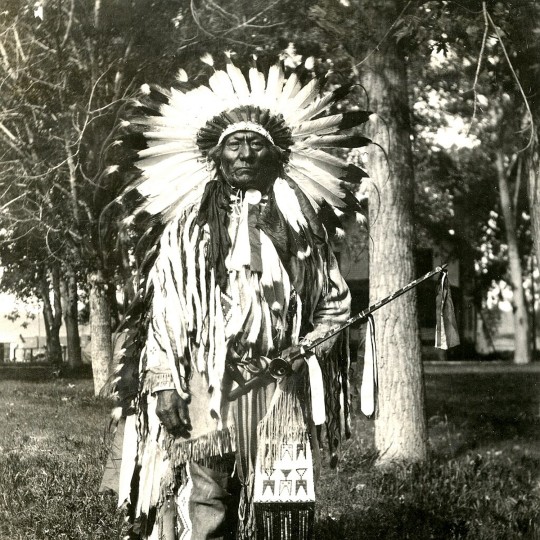
White Bull
White Bull (Tatanka Ska, l. 1849-1947) was a Hunkpapa Lakota Sioux warrior, nephew of Sitting Bull (l. c. 1837-1890), who is among the many claimed to have killed Lt. Colonel George Armstrong Custer (l. 1839-1876) at the Battle of the Little Bighorn. He may also be the main character in the well-known Cheyenne tale An Eagle's Teaching.
White Bull participated in several engagements with the US military, including the skirmish at Arrow Creek by the Yellowstone River (Elk River) in 1872 between Sitting Bull and Custer. White Bull is the primary source for the famous story of Sitting Bull's "smoking party" during that encounter at which he demonstrated his complete contempt for Custer and his men by calmly smoking his pipe with others, including White Bull, within range of Custer's men as bullets whizzed and thumped into the earth around them.
He also fought in Red Cloud's War (1866-1868) alongside Sitting Bull, Crazy Horse, Red Cloud, Spotted Tail, Two Strike, Roman Nose (Cheyenne Warrior), Cheyenne chiefs Morning Star (Dull Knife) and Little Wolf (also known as Little Coyote), among others, including the Cheyenne warrior Wooden Leg who is another contender for the title of the person who killed Custer at the Battle of the Little Bighorn, the most famous engagement of the Great Sioux War of 1876-1877.
After the Battle of the Little Bighorn, White Bull followed his uncle and others, including Sioux war chief Gall (l. c. 1840-1894) into exile in Canada. He eventually returned, earlier than the others, and surrendered to US authorities. He later became a judge and an advocate for the claims of the Sioux concerning the Black Hills. Like Two Strike (l. c. 1831-1915), White Bull's participation in the resistance to US westward expansion has been overshadowed by narratives of his more famous contemporaries.
He is best known today for his contributions to Stanley Vestal's Sitting Bull, Champion of the Sioux (1932), a biography of his uncle, and for Lakota Warrior (or The Warrior Who Killed Custer), his autobiography (1998) edited by James H. Howard. The activist Floris White Bull (Floris Ptesan Hunka), presently engaged in protests against abuses of Native Americans by the US government, is his direct descendant.
Early Life & War
White Bull was the son of Hunkpapa Sioux Good Feather (Sitting Bull's sister) and Miniconjou chief Makes-Room in the region of the Black Hills of modern-day South Dakota. His birth name was Bull-Standing-With-Cow, but, when he was 16, he "counted coup" on three enemy warriors (striking without killing them) and was given the name White Bull by his uncle Black Moon. He also took at least ten horses from the enemy during this engagement. The theft of horses from other nations (including the United States) counted toward one's status, wealth, and personal or communal power.
Little is known of White Bull's life prior to the 1860s as later writers tended to interview him mainly on his famous uncle. He fought with Crazy Horse (l. c. 1840-1877) at the Battle of the Hundred-in-the-Hands (Fetterman Massacre) on 21 December 1866 and was also present at the Wagon Box Fight (2 August 1867) during Red Cloud's War. After the Fort Laramie Treaty of 1868, White Bull continued his resistance to the genocidal policies of the US government through various raids and skirmishes but, among these, is best known for his account of Sitting Bull's "smoking party" at Arrow Creek in 1872.
Continue reading...
53 notes
·
View notes
Text
Mormon Doctrine of Blood Atonement and the Law of Vengance
Blood Atonement: This part of Mormon doctrine has now been denied by church leaders and practitioners, and denounced as a lie spread by detractors of the church. However, many official church texts, mainly those created during Brigham Young's presidency, state this belief explicitly. It refers to the idea that, although Jesus Christ's blood has atoned for the sins of the world, there are certain crimes against God that not even Christ can redeem. In this instance, that person must have their blood shed upon the earth so that they may not be subject to eternal suffering in outer darkness as a son of perdition.
"... Brigham Young, taught that in a complete theocracy the Lord could require the voluntary shedding of a murder's blood - presumably by capital punishment - as part of the process for atonement of such grevious sin." (Encyclopedia of Mormonism, Daniel H Ludlow, Brigham Young University)
While this quote states that the sinner's blood must be shed voluntarily, it does not appear to be a requirement, as seen in the execution of John D. Lee folowing the Mountain Meadows Massacre, of which Brigham Young was quoted as saying during an interview:

[Correspondednt - "Do you belive in blood atonement?"
Brigham Young - "I do, and I belive that Lee has not half atoned for his great crime. The Saviour died for all the sins of the world by shedding his blood, and then I belive that he who sheds the blood of man wilfully, by man shall his blood be shed. In other words capital punishment of roffenses deserving death, according to the laws of the land"] (An Interview With Brigham Young, from Deseret News vol. 26 no. 16)
Other crimes against God that may call for blood atonement are apostasy (denying the church's truth), theft, and fornication, although sodomy and adultery are not included. It is important to note that this practice was intended to be instituted in a state run by the Mormon acting as the head of the government. Brigham Young was once close to this theocracy during the early days of the Mormon church in the Utah Territory. The pre-existing church heirarchy and leadership quickly assumed positions of power, with Brigham Young serving as the Utah Territory's first govenor, where he exerted incredibly influence over the people. In Young's ideal world, he could govern his church and prosecute those deserving of capital punishment through the arm of the law, thus implementing blood atonement.
Examples of this include the diary of John Doyle Lee, who was present for meetings between Brigham Young and The Council of Fifty (a group of religious leaders in a legislative body), as they drafted a plan for the State of Deseret (the proposed name for the modern day state of Utah). On March 3rd, 1849, Young was quoted as saying "...Suffering infernals, thieves, Murderers, Whoremongers & every other wicked curst to [exist?], through mercy to live amoung us, adding sin to sin, crime to crime, currupting the morals of the People when their Blood ought to floow [sic] to atone for their crimes. I want their cursed heads to be cut off that they may atone for their Sins, that mercy may have her claims upon them in the day of redemption."
Additionally, Brigham Young promoted decapitation to atone for the supposed sin of White Mormon men intermingling with Black people. He said, "If a man in an unguarded moment should commit such a transgression, if he would walk up and say cut off my head, and kill man woman and child it would do a great deal towards atoning for the sin. Would this be to curse them? no it would be a blessing to them. — it would do them good that they might be saved with their Bren. A man would shudder should they here us take about killing folk, but it is one of the greatest blessings to some to kill them, although the true principles of it are not understood" (Speech by Gov. Young in Joint Session of the Legislature, Feb 5th, 1852)
Both of these quotes mentioned above paint a clear picture of what Brigham Young was intending to do with the Utah territory. There are records of him doing so along with the Council of Fifty, which are recorded in John Doyle Lee's diary as discussing decapitating a man and how to "dispose of him privately". Although they eventually let this man live, decapitiation as a method of execution was instituted in Utah until 1888.
Another important part of the doctrine of blood atonement is it's relationship to the murder of Joseph Smith Jr, the first prophet and leader of the Mormon church, and his brother Hiram Smith, at Carthage Jail, Illinois. This assasination occured both because of political strife (Josph Smith was running for United States President, among lesser state-centric conflicts with authorities, mostly about polygamy) and a rejection of Mormonism by the people of Illinois. Following his death, Brigham Young was instated as the new prophet of the church, upon which he began teaching the idea that Joseph and Hiram's blood cried out against God for vengance. This sparked the institution of the oath of vengance, as part of the endowment ritual (one of the highest ceremonies preformed in Mormon temples, meant to give all members the key words, signs, tokens, and ordinances needed to return to God's kingdom).
Oath of Vengance: This was an addition to the Nauvoo endowment during a time where many church members yearned to avenge the murder of their most beloved leader and prophet. The original oath reads as follows: "You and each of you do covenant and promise that you will pray and never cease to pray to Almighty God to avenge the blood of the prophets upon this nation, and that you will teach the same to your children and to your children's children unto the third and fourth generation." While some members interpereted this as a prompt for prayer alone, others took it to mean a personal responsibility to kill those involved in the martyrdom, should the situation arise. This part of the endowment ceremony was taken out in 1927 during the intitiution of the church's Good Neighbor Policy. These are not to be confused with penalty oaths, which describe the participants agreement to being slit ear to ear, disemboweled, detounged, and have their hearts split open if they revealed the secrets of the church and their endowed vows to others. (may make an infopost on this one too)
Other notable supporters of blood atonement include Jedidiah M Grant, who wrote the statement below in the Deseret News on March 12 1854.

["It is their right to baptize a sinner to save him, and it is also their right to kill a sinner to save him, when he commits those crimes that can only be atoned for by shedding his blood. If the Lord God forgives sins by baptism, and there is another law that certain sins cannot be atoned for by baptism, but by the shedding of the blood of the sinner, query, whether the people of God be overreaching the mark, if they should execute the law to save such. They could do it sucinctly. We would not kill a man, of course, unless we killed to save him."] (Deseret News, vol. 4 no. 20)
It is important to mention that, although there is clear evidence of the doctrine being preached, the Mormon church made a firm stance that it had not actually practiced this doctrine yet, although it would do so soon towards covenant breakers. They also preached that current sinners who would likely need to atone by their own blood should repent as much as they could while alive, so that eventually their sins would not be so greivious as to require their deaths. Blood atonement was framed as an act of both mercy and love, rather than a deliberatly violent act. Two notable reported victims of blood atonement are Thomas Coleman, a Black man who was murderd by Mormons for his relationship with a white woman, and Rosmos Anderson, a Danish Mormon and willing participant who was sentenced for adultery. (I will make a seperate post about these individuals and other people killed).
Jedidiah M Grant was also quoted as saying the below quote during a sermon titled Rebuking Iniquity on September 21, 1856

["I say, that there are men and women that I would advise to go to the President immediately, and ask him to appoint a committee to attend to their case; and then let a place be selected, and let that committee shed their blood. We have those amongst us that are full of all manner of abominations, those who need to have thier blood shed, for water will not do, their sins are of too deep a dye."]
This doctrine continued to be defended by later prophets, such as John Taylor and Charles W Penrose. However, in a statement issued in 1889 by prophet Wilford Woodruf, the church denied their promotion of blood atonement, saying "We denounce as entirely untrue the allegation which has been made, that our church favors or believes in the killing of persons who leave the church or apostatize from its doctrines." (Manisfesto of the Presidency and Apostles, December 12, 1889) This denial was later restated by church figures like Bruce R McConkie, stating "If by blood atonement is meant the shedding of the blood of men to atone in some way for their own sins, the answer is No. We do not believe that it is necessary for men in this day to shed their own blood to receive a remission of sins." (Letter from Bruce R McConkie to Thomas B. McAfee)
Blood atonement continues to be denied by the Church of Jesus Christ of Latter Day Saints, although it is still practiced by some splinter groups today. One final note is that the system for capital punishment in Utah involved the option for either death by hanging or death by firing squad. While hanging did not spill the sinner's blood upon the earth, therefore keeping the sinner from experiencing blood atonement, death by firing squad would, and as such, was presented as a valid option for those sentenced to death in Utah. However, it appears firing squads were less favored then decapitation, which would spill more blood. Death by firing squad was removed from Utah prison systems in 2004, and has now been replaced by lethal intravenous injection. This law was not applied retroactively however, allowing Ronnie Lee Gardener to choose death by firing squad in 2010, the last exectuion of its kind in both Utah and the United States. He cited his Mormon roots for this decision.
#god thats long im sorry#anyway hope at least one of u enjoyed sorry#its my blog i get to pick what i infodump on#loreposting
16 notes
·
View notes
Photo
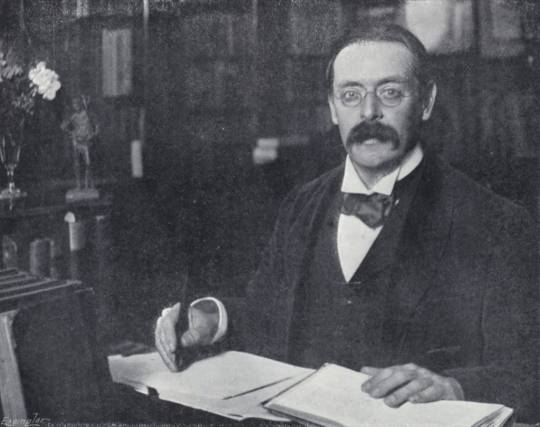
Edmund Gosse (deceased)
Gender: Male
Sexuality: Bisexual
DOB: 21 September 1849
RIP: 16 May 1928
Ethnicity: White - English
Occupation: Poet, writer, writing critic, professor
#Edmund Gosse#bisexuality#bisexual men#lgbt history#lgbt#lgbtq#mlm#male#bisexual#1849#rip#historical#white#english#poet#writer#critic#teacher
44 notes
·
View notes
Text
The napoleonic marshal‘s children
After seeing @josefavomjaaga’s and @northernmariette’s marshal calendar, I wanted to do a similar thing for all the marshal’s children! So I did! I hope you like it. c: I listed them in more or less chronological order but categorised them in years (especially because we don‘t know all their birthdays). At the end of this post you are going to find remarks about some of the marshals because not every child is listed! ^^“ To the question about the sources: I mostly googled it and searched their dates in Wikipedia, ahaha. Nevertheless, I also found this website. However, I would be careful with it. We are talking about history and different sources can have different dates. I am always open for corrections. Just correct me in the comments if you find or know a trustful source which would show that one or some of the dates are incorrect. At the end of the day it is harmless fun and research. :) Pre 1790
François Étienne Kellermann (4 August 1770- 2 June 1835)
Marguerite Cécile Kellermann (15 March 1773 - 12 August 1850)
Ernestine Grouchy (1787–1866)
Mélanie Marie Josèphe de Pérignon (1788 - 1858)
Alphonse Grouchy (1789–1864)
Jean-Baptiste Sophie Pierre de Pérignon (1789- 14 January 1807)
Marie Françoise Germaine de Pérignon (1789 - 15 May 1844)
Angélique Catherine Jourdan (1789 or 1791 - 7 March 1879)
1790 - 1791
Marie-Louise Oudinot (1790–1832)
Marie-Anne Masséna (8 July 1790 - 1794)
Charles Oudinot (1791 - 1863)
Aimee-Clementine Grouchy (1791–1826)
Anne-Francoise Moncey (1791–1842)
1792 - 1793
Bon-Louis Moncey (1792–1817)
Victorine Perrin (1792–1822)
Anne-Charlotte Macdonald (1792–1870)
François Henri de Pérignon (23 February 1793 - 19 October 1841)
Jacques Prosper Masséna (25 June 1793 - 13 May 1821)
1794 - 1795
Victoire Thècle Masséna (28 September 1794 - 18 March 1857)
Adele-Elisabeth Macdonald (1794–1822)
Marguerite-Félécité Desprez (1795-1854); adopted by Sérurier
Nicolette Oudinot (1795–1865)
Charles Perrin (1795–15 March 1827)
1796 - 1997
Emilie Oudinot (1796–1805)
Victor Grouchy (1796–1864)
Napoleon-Victor Perrin (24 October 1796 - 2 December 1853)
Jeanne Madeleine Delphine Jourdan (1797-1839)
1799
François Victor Masséna (2 April 1799 - 16 April 1863)
Joseph François Oscar Bernadotte (4 July 1799 – 8 July 1859)
Auguste Oudinot (1799–1835)
Caroline de Pérignon (1799-1819)
Eugene Perrin (1799–1852)
1800
Nina Jourdan (1800-1833)
Caroline Mortier de Trevise (1800–1842)
1801
Achille Charles Louis Napoléon Murat (21 January 1801 - 15 April 1847)
Louis Napoléon Lannes (30 July 1801 – 19 July 1874)
Elise Oudinot (1801–1882)
1802
Marie Letizia Joséphine Annonciade Murat (26 April 1802 - 12 March 1859)
Alfred-Jean Lannes (11 July 1802 – 20 June 1861)
Napoléon Bessière (2 August 1802 - 21 July 1856)
Paul Davout (1802–1803)
Napoléon Soult (1802–1857)
1803
Marie-Agnès Irma de Pérignon (5 April 1803 - 16 December 1849)
Joseph Napoléon Ney (8 May 1803 – 25 July 1857)
Lucien Charles Joseph Napoléon Murat (16 May 1803 - 10 April 1878)
Jean-Ernest Lannes (20 July 1803 – 24 November 1882)
Alexandrine-Aimee Macdonald (1803–1869)
Sophie Malvina Joséphine Mortier de Trévise ( 1803 - ???)
1804
Napoléon Mortier de Trévise (6 August 1804 - 29 December 1869)
Michel Louis Félix Ney (24 August 1804 – 14 July 1854)
Gustave-Olivier Lannes (4 December 1804 – 25 August 1875)
Joséphine Davout (1804–1805)
Hortense Soult (1804–1862)
Octavie de Pérignon (1804-1847)
1805
Louise Julie Caroline Murat (21 March 1805 - 1 December 1889)
Antoinette Joséphine Davout (1805 – 19 August 1821)
Stephanie-Josephine Perrin (1805–1832)
1806
Josephine-Louise Lannes (4 March 1806 – 8 November 1889)
Eugène Michel Ney (12 July 1806 – 25 October 1845)
Edouard Moriter de Trévise (1806–1815)
Léopold de Pérignon (1806-1862)
1807
Adèle Napoleone Davout (June 1807 – 21 January 1885)
Jeanne-Francoise Moncey (1807–1853)
1808: Stephanie Oudinot (1808-1893) 1809: Napoleon Davout (1809–1810)
1810: Napoleon Alexander Berthier (11 September 1810 – 10 February 1887)
1811
Napoleon Louis Davout (6 January 1811 - 13 June 1853)
Louise-Honorine Suchet (1811 – 1885)
Louise Mortier de Trévise (1811–1831)
1812
Edgar Napoléon Henry Ney (12 April 1812 – 4 October 1882)
Caroline-Joséphine Berthier (22 August 1812 – 1905)
Jules Davout (December 1812 - 1813)
1813: Louis-Napoleon Suchet (23 May 1813- 22 July 1867/77)
1814: Eve-Stéphanie Mortier de Trévise (1814–1831) 1815
Marie Anne Berthier (February 1815 - 23 July 1878)
Adelaide Louise Davout (8 July 1815 – 6 October 1892)
Laurent François or Laurent-Camille Saint-Cyr (I found two almost similar names with the same date so) (30 December 1815 – 30 January 1904)
1816: Louise Marie Oudinot (1816 - 1909)
1817
Caroline Oudinot (1817–1896)
Caroline Soult (1817–1817)
1819: Charles-Joseph Oudinot (1819–1858)
1820: Anne-Marie Suchet (1820 - 27 May 1835) 1822: Henri Oudinot ( 3 February 1822 – 29 July 1891) 1824: Louis Marie Macdonald (11 November 1824 - 6 April 1881.) 1830: Noemie Grouchy (1830–1843) —————— Children without clear birthdays:
Camille Jourdan (died in 1842)
Sophie Jourdan (died in 1820)
Additional remarks: - Marshal Berthier died 8.5 months before his last daughter‘s birth. - Marshal Oudinot had 11 children and the age difference between his first and last child is around 32 years. - The age difference between marshal Grouchy‘s first and last child is around 43 years. - Marshal Lefebvre had fourteen children (12 sons, 2 daughters) but I couldn‘t find anything kind of reliable about them so they are not listed above. I am aware that two sons of him were listed in the link above. Nevertheless, I was uncertain to name them in my list because I thought that his last living son died in the Russian campaign while the website writes about the possibility of another son dying in 1817. - Marshal Augerau had no children. - Marshal Brune had apparently adopted two daughters whose names are unknown. - Marshal Pérignon: I couldn‘t find anything about his daughters, Justine, Elisabeth and Adèle, except that they died in infancy. - Marshal Sérurier had no biological children but adopted Marguerite-Félécité Desprez in 1814. - Marshal Marmont had no children. - I found out that marshal Saint-Cyr married his first cousin, lol. - I didn‘t find anything about marshal Poniatowski having children. Apparently, he wasn‘t married either (thank you, @northernmariette for the correction of this fact! c:)
#Marshal‘s children calendar#literally every napoleonic marshal ahaha#napoleonic era#Napoleonic children#I am not putting all the children‘s names into the tags#Thank you no thank you! :)#YES I posted it without double checking every child so don‘t be surprised when I have to correct some stuff 😭#napoleon's marshals#napoleonic
77 notes
·
View notes
Text
My Pioneer Heritage
So, my Biological Family has pioneers in it. Matta Maria Rosenlund (who went by her Middle Name when she got to Utah) & her husband Daniel Dewey Corbett are among them
Daniel Corbett
Daniel was born in Maine on May 16 1807. He and his wife joined the Church in 1839. They moved to Nauvoo in 1844, and only learned about the Martyrdom when he was en route (which means, unfortunately, they never saw the Prophet personally). He was ordained as a Seventy when he arrived in Nauvoo, and used his skill as a Cobbler to help finish the Nauvoo Temple. They received their "partial Endowments" (I am unsure what this means, but if you're familiar with the Endowment, he got at least the Adam part) on January 12, 1846, before they & their family were forced from Nauvoo
They moved Kanesville, Iowa for years. They were able to plant & harvest their own crops, and even had a daughter who would later marry Martin Harris Jr. On July 5, 1849 the family joined the Allen Taylor company, and completed the journey to Salt Lake
When they arrived, they were allotted land between 4-5 East & 6-7 South. In the early years, he was extremely charitable (given the hardship of all the Saints during this era). He would make & mend shoes for little to no charge, collected firewood for widows, and gave what flour they could spare to those in need (they would take a brass kettle of flour to them as their Fast Offerings)
They wore homespun clothes, dying & spinning the yarn, then sending it to the mill to be made into cloth. They ate Pork, Cornbread, Jonnie Cakes, and Sugar Cane Molasses. They fasted on Thursday Morning (Fast Day was Thursday in the Early Church)
He lived close to the school, and was one of the few Saints who had a clock, so students were often sent to his home to determine the time. Daniel's family was unable to afford the 25¢ a week cost, so like many students, they paid it with vegetables
Daniel loved his wife, Elmira (born 1811). They were Sealed by Brigham Young on June 30, 1853. Unfortunately, she passed in February the next year. This lead Daniel to have to care for 6 children (ages 5-24, with the oldest being married the year before). He remarried Ann Jones, an English Convert, on November 8, 1861. Ann was married before she immigrated in 1849, but it is unknown if she was widowed or divorced. Ann had poor health, and was infertile. As her health became worse, she told Daniel to find a Second Wife, to help care for her & the 2 children left at home. This wife was Matta Rosenlund. Ann died in December 1888, and always held love for her sister-wife (although we know more about Elmira & Matta, Ann is relatively unknown, possibly because she had no children to tell her story. I hope, when the Resurrection occurs, I will be able to learn at the feet of the woman who brought my 3rd Great-grandmother into her family)
He lived many years, supporting his family, and living the Gospel until his passing on June 26, 1892. He was buried next to Ann
Matta Maria Rosenlund
Matta was born November 1, 1826 in Malmöhus, Sweden. She was the first born of Wilhelm Jonas Rosenlund & Boel Jonsson. She had 2 sisters & a brother: Anna (March 20, 1829-? She survived to Adulthood), Hannah (May 25, 1831- May 25, 1832), and Johan Wilhelm (April 10, 1834-October 2, 1836)
Both of her parents died of Cholera in Stockholm when she was 13, leading her & 10 year old Anna being placed in an Orphanage. Despite this, Matta (and presumably Anna) were educated at the King's School, given her father's illustrious military career (being the equivalent of a 4-Star General by age 30). After her education, she got a job in a bakery before marrying Ockar Victor Leonard Svansberg on May 29, 1849
Oscar was a French Sculptor & a Mason "of high degree." She was seen as more Spiritually inclined, while her husband was more Worldly. However, they were often seen together at high society events, such as Masonic Balls ("where Mr. Svansberg was usually the leader because of his pleasing appearance and personality")
Together, they had 4 Children in Stockholm: Victor Mauritz (June 25, 1850-), Maria Lovisa (July 4, 185è-), Oscar A. (1853-? Died in Infancy), and Hilma Ida Constance (May 4, 1863-)
Maria was a faithful Lutheran, but joined the Church in 1859. She spent the next 5 years trying to bring her husband to the Church. When he wouldn't join, she left him, and brought their daughters (Lovisa age 11, Ida under 1) to England with her. They sailed on the Monarch of the Sea under the direction of John Smith (Church Patriarch)
The journey was treacherous. They sailed from April 28, 1864 to June 3, 1864. There were 973 immigrants, and they were provided with little water and whatever provisions the Church could gather (Hardtack, Pork, Peas, and a little White Flour, Sugar, Coffee, and a few other things). The next day, they saw the logistical errors of feeding nearly 1,000 people when it took them 8 hours to get everyone Rice. It was also on this day the first baby died on Measles. Ida was the only baby to survive the voyage, with the other 20 either dying from the disease, or being thrown to sea. The Capitan was determined to throw Ida to sea as well, but Matta hid Ida in her Shawl. In addition to sickness, the sea was so violent that the sickbay was often full of people injured by being thrown around, and there were days when the cook was unable to safely cook (meaning there was no food those days)
After arriving in New York, she took a number of trains until she arrived in Nebraska. On July 4, 1864, Matta & her Daughters joined with the William B Preston Company, arriving in Salt Lake on September 15th, 1864. Her grandson reported that "although Zion did not appear to her as she had anticipated, she many times made the remark that when she set her feet on Utah soil it was the happiest moment of her life. The struggle to exist was a very difficult one, but she seemed obsessed with the desire to make good, and through toil, struggle, and undying faith she succeeded." Soon after her arrival, she heard from friends back in Sweden of the death of her husband
Her son, Victor wanted to join his mother & sisters on their journey, but was unable to due to his service in the Swedish Military. He arrived on July 14, 1877 (after a mere 3-weeks journey). He lived with his mother for 2 years, before disappearing without a trace
When in Utah, she became a Nurse, and helped Ann Jones. Ann & Matta (platonically) loved each other, and Ann asked Daniel to take Matta as a Plural Wife. This marriage resulted in 2 Children: George Q (November 28, 1866-September 20, 1867) & Otis (December 21, 1868-Febuary 4, 1940). Ann helped watch the Children when she was away from home, and adored all of Daniel's Children (as well as Matta's Children from her first marriage) like they were her own
Matta continued her career for over 20 years, sometimes accompanying Ella Shipp (honestly, I can write a whole essay about this badass female doctor, but you'll have to Google her for now). She was eternally optimistic, and was known for helping her patients recover rapidly. She delivered hundreds of children
I love learning about family history because of the lessons we can learn from those who came before
Daniel was a loving man. He never had much, but he was generous with what he did have. Maybe he only had a kettle of flour, but he gave that flour to those who needed it more. Although Matta's Children weren't his own, he loved them unconditionally, and gave whatever he could
Ann may have been infertile, and invalid, but she didn't let either stop her. She rejoiced in all the children of her husband's wives. She cared for them when she could muster up the strength
And Matta went through a lot. Orphaned at 13 & having to care for a sister, fearing having your daughter thrown overboard, having a son go missing without a trace, and being constantly surrounded by sickness. But she never lost hope. She was born in high society, and married into it. But her happiest moment was after she gave it up. She fought for everything she had, and that brought her joy, because she knew she had earned every blessing
I want these stories to be known. Every story deserves to be told, to live through the Ages, to inspire the Children of Men to do better
I want to hear your stories. I chose my Pioneer Ancestors because they speak to me the most. But I want to hear about the people who's stories you most value, whether your parents' story, or some obscure knight in the 12th century.
𐐔𐐰𐑌𐐷𐐲𐑊 𐐔𐐭𐐨 𐐗𐐫𐑉𐐺𐐮𐐻- 𐐕𐐰𐑉𐐮𐐻𐐨 𐐮𐑆 𐑄 𐐑𐐷𐐳𐑉 𐐢𐐲𐑂 𐐲𐑂 𐐗𐑉𐐴𐑅𐐻
𐐣𐐰𐐻𐐲 𐐣𐐲𐑉𐐨𐐲 Rosenlund (unsure how to pronounce her last name...)- 𐐆𐑁 𐐷𐐨 𐐸𐐰𐑂 𐑁𐐩𐑃 𐐰𐑆 𐐩 𐑀𐑉𐐩𐑌 𐐲𐑂 𐑋𐐲𐑅𐐻𐐲𐑉𐐼 𐑅𐐨𐐼, 𐑌𐐲𐑃𐐮𐑍 𐑇𐐰𐑊 𐐺𐐨 𐐮𐑋𐐹𐐪𐑅𐐲𐐺𐐲𐑊 𐐲𐑌𐐻𐐭 𐐷𐐭
7 notes
·
View notes
Text
irl bsd authors
i haven't found a list of irl bsd authors listed from oldest to most recent so i decided to do that. multiple lists for date of birth, death, and publication of the work their ability is based on (if applicable) + fun stuff at the end
birth dates (oldest to most recent)
alexander pushkin - 6 Jun 1799
nathaniel hawthorne - 4 Jul 1804
edgar allan poe - 19 Jan 1809
nikolai gogol - 1 Apr 1809
ivan gonchorav - 18 Jun 1812
herman melville - 1 Aug 1819
fyodor dostoevsky - 11 Nov 1821
jules verne - 8 Feb 1828
saigiku jōno - 24 Sep 1832
louisa may alcott - 29 Nov 1832
yukichi fukuzawa - 10 Jan 1835
mark twain - 30 Nov 1835
ōchi fukuchi - 13 May 1841
paul verlaine - 30 Mar 1844
bram stoker - 8 Nov 1847
tetchō suehiro - 15 Mar 1849
arthur rimbaud - 20 Oct 1854
ryūrō hirotsu - 15 Jul 1861
ōgai mori - 17 Feb 1862
h. g. wells - 21 Sep 1866
natsume sōseki - 9 Feb 1867
kōyō ozaki - 10 Jan 1868
andré gide - 22 Nov 1869
doppo kunikida - 30 Aug 1871
katai tayama - 22 Jan 1872
ichiyō higuchi - 2 May 1872
kyōka izumi - 4 Nov 1873
lucy maud montgomery - 30 Nov 1874
akiko yosano - 7 Dec 1878
santōka taneda - 3 Dec 1882
teruko ōkura - 12 Apr 1886
jun'ichirō tanizaki - 24 Jul 1886
yumeno kyūsaku - 4 Jan 1889
h. p. lovecraft - 20 Aug 1890
agatha christie - 15 Sep 1890
ryūnosuke akutagawa - 1 Mar 1892
ranpo edogawa - 21 Oct 1894
kenji miyazawa - 27 Aug 1896
f. scott fitzgerald - 24 Sep 1896
margaret mitchell - 8 Nov 1900
motojirō kajii - 17 Feb 1901
mushitarō oguri - 14 Mar 1901
john steinbeck - 27 Feb 1902
aya kōda - 1 Sep 1904
ango sakaguchi - 20 Oct 1906
chūya nakahara - 29 Apr 1907
atsushi nakajima - 5 May 1909
osamu dazai - 19 Jun 1909
sakunosuke oda - 26 Oct 1913
michizō tachihara - 30 Jul 1914
tatsuhiko shibusawa - 8 May 1928
(ace) alan bennett - 9 May 1934
yukito ayatsuji - 23 Dec 1960
mizuki tsujimura - 29 Feb 1980
death dates (oldest to most recent)
alexander pushkin - 10 Feb 1837
edgar allan poe - 7 Oct 1849
nikolai gogol - 4 Mar 1852
nathaniel hawthorne - 19 May 1864
fyodor dostoevsky - 9 Feb 1881
louisa may alcott - 6 Mar 1888
ivan goncharov - 27 Sep 1891
herman melville - 28 Sep 1891
arthur rimbaud - 10 Nov 1891
paul verlaine - 8 Jan 1896
tetchō suehiro - 5 Feb 1896
ichiyō higuchi - 23 Nov 1896
yukichi fukuzawa - 3 Feb 1901
saigiku jōno - 24 Jan 1904
jules verne - 24 Mar 1905
kōyō ozaki - 30 Oct 1903
ōchi fukuchi - 4 Jan 1906
doppo kunikida - 23 Jun 1908
mark twain - 21 Apr 1910
bram stoker - 20 Apr 1912
natsume sōseki - 9 Dec 1916
ōgai mori - 8 Jul 1922
ryūrō hirotsu - 25 Oct 1928
ryūnosuke akutagawa - 24 Jul 1927
katai tayama - 13 May 1930
motojirō kajii - 24 Mar 1932
kenji miyazawa - 21 Sep 1933
yumeno kyūsaku - 11 Mar 1936
h. p. lovecraft - 15 Mar 1937
chūya nakahara - 22 Oct 1937
michizō tachihara - 29 Mar 1939
kyōka izumi - 7 Sep 1939
santōka taneda - 11 Oct 1940
f. scott fitzgerald - 21 Dec 1940
lucy maud montgomery - 24 Apr 1942
mushitarō oguri - 10 Feb 1946
h. g. wells - 13 Aug 1946
akiko yosano - 29 May 1942
atsushi nakajima - 4 Dec 1942
sakunosuke oda - 10 Jan 1947
osamu dazai - 13 Jun 1948
margaret mitchell - 16 Aug 1949
andré gide - 19 Feb 1951
ango sakaguchi - 17 Feb 1955
teruko ōkura - 18 Jul 1960
ranpo edogawa - 28 Jul 1965
jun'ichirō tanizaki - 30 Jul 1965
john steinbeck - 20 Dec 1968
agatha christie - 12 Jan 1976
tatsuhiko shibusawa - 5 Aug 1987
aya kōda - 31 Oct 1990
(ace) allan bennett - still alive
yukito ayatsuji - still alive
mizuki tsujimura - still alive
work (oldest to most recent)
alexander pushkin - A Feast in Time of Plague, 1830
edgar allan poe - The Murders in Rue Morgue, 1841
nikolai gogol - The Overcoat, 1842
edgar allan poe - The Black Cat, 19 Aug 1843
nathaniel hawthorne - The Scarlet Letter, 1850
herman melville - Moby-Dick, 1851
louisa may alcott - Little Women, 1858
fyodor dostoevsky - Crime and Punishment, 1866
ivan goncharov - The Precipice, 1869
yukichi fukuzawa - An Encouragement of Learning, 1872-76
jules verne - The Mysterious Island, 1875
mark twain - The Adventures of Tom Sawyer, 1876
mark twain - Adventures of Huckleberry Finn, 1884
tetchō suehiro - Plum Blossoms in the Snow, 1886
arthur rimbaud - Illuminations, 1886
saigiku jōno - Priceless Tears, 1889
ōchi fukuchi - The Mirror Lion, A Spring Diversion, Mar 1893
ryūrō hirotsu - Falling Camellia, 1894
h. g. wells - The Time Machine, 1895
kōyō ozaki - The Golden Demon, 1897
bram stoker - Dracula, 1897 (his ability has not been named, but c’mon, vampires)
akiko yosano - Thou Shall Not Die, 1903
natsume sōseki - I Am a Cat, 1905-06
katai tayama - Futon, 1907
lucy maud montgomery - Anne of Green Gables, 1908
ōgai mori - Vita Sexualis, 1909
andré gide - Strait is the Gate, 1909
kyōka izumi - Demon Pond, 1913
ryūnosuke akutagawa - Rashomon, 1915
motojirō kajii - Lemon, 1924
f. scott fitzgerald - The Great Gatsby, 1925
kenji miyazawa - Be not Defeated by the Rain, 3 Nov 1931
santōka taneda - Self-Derision, 8 Jan 1932
mushitarō oguri - Perfect Crime, 1933
chūya nakahara - This Tainted Sorrow, 1934
yumeno kyūsaku - Dogra Magra, 1935
margaret mitchell - Gone With the Wind, 1936
john steinbeck - The Grapes of Wrath, 1939
agatha christie - And Then There Were None, 6 Nov 1939
atsushi nakajima - The Moon Over the Mountain, Feb 1942
jun'ichirō tanizaki - The Makioka Sisters, 1943-48
ango sakaguchi - Discourse on Decadence, 1946
teruko ōkura - Gasp of the Soul, 1947
osamu dazai - No Longer Human, 1948
(ace) alan bennett - The Madness of King George III, 1995
yukito ayatsuji - Another, 2005
mizuki tsujimura - Yesterday’s Shadow Tag, 2015
can’t find dates:
michizō tachihara - Midwinter Memento
sakunosuke oda - Flawless
n/a: doppo kunikida, ranpo edogawa, ichiyō higuchi, h. p. lovecraft “Great Old Ones” (fictional ancient dieties eg. cthulhu), aya koda, paul verlaine, tatsuhiko shibusawa “Draconia” (umbrella term for shibusawa’s works/style)
bonus:
elise - The Dancing Girl (1890) by ōgai mori
shōsaku katsura - An Uncommon Common Man by doppo kunikida
Nobuko Sasaki (20 Jul 1878 - 22 Sep 1949) - doppo kunikida’s first wife
gin akutagawa - O-gin (1922) by ryūnosuke akutagawa
naomi tanizaki + kirako haruno - Naomi (1925) by jun'ichirō tanizaki
t. j. eckelburg + tom buchanan - The Great Gatsby (1925) by f. scott fitzgerald
the black lizard - Back Lizard (1895) by ryūrō hirotsu (+ The Black Lizard (1934) by ranpo edogawa)
some fun facts:
the oldest: aya koda 86, andré gide 81, h. g. wells 79, jun'ichirō tanizaki 79, ivan goncharov 79 (alan bennett is 89 but still alive)
the youngest: ichiyō higuchi 24, michizō tachihara 24, chūya nakahara 30
yukito ayatsuji’s Another is also an anime, released in 2012
both edgar allan poe and mark twain’s ability consist of two of the author’s work
17 notes
·
View notes
Text
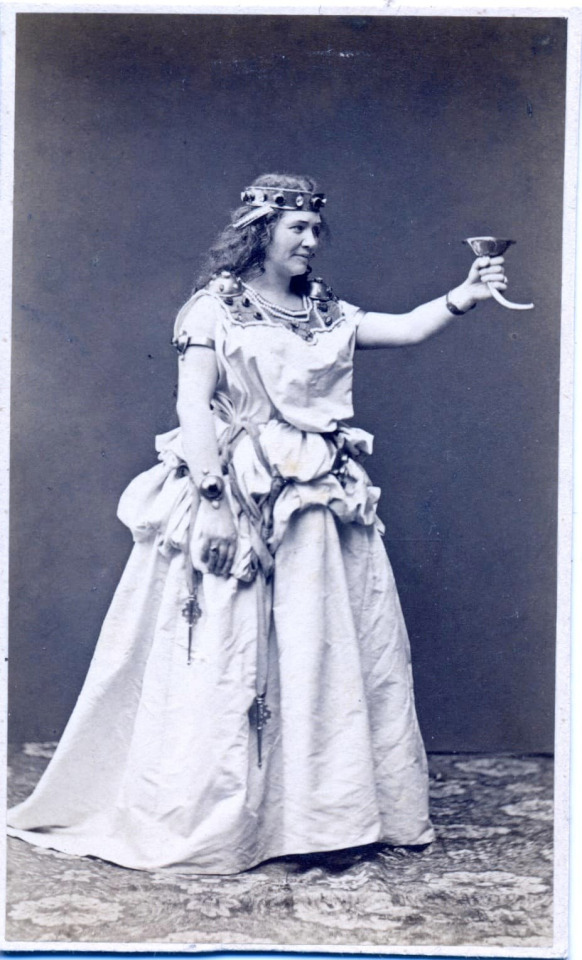
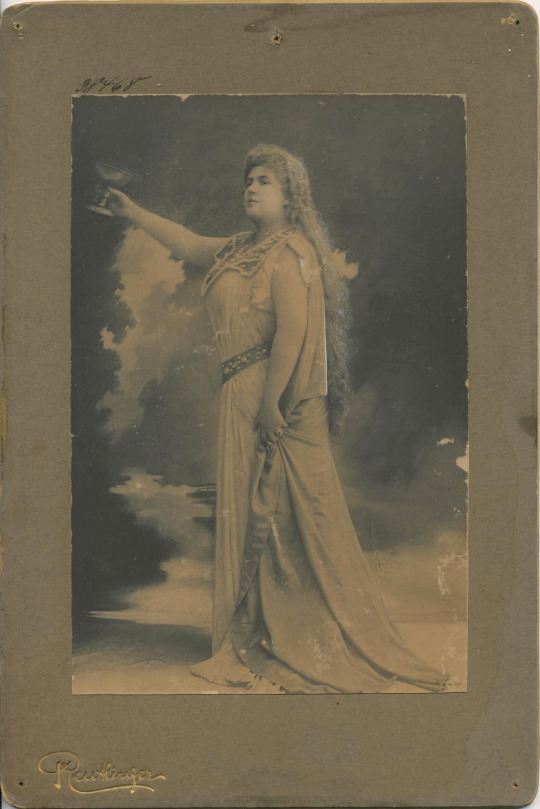


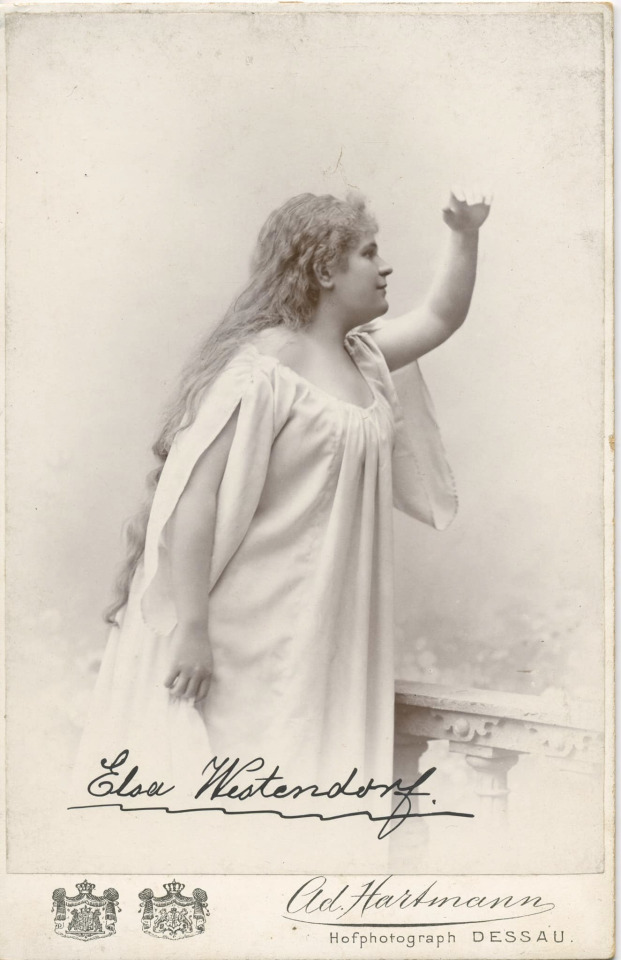

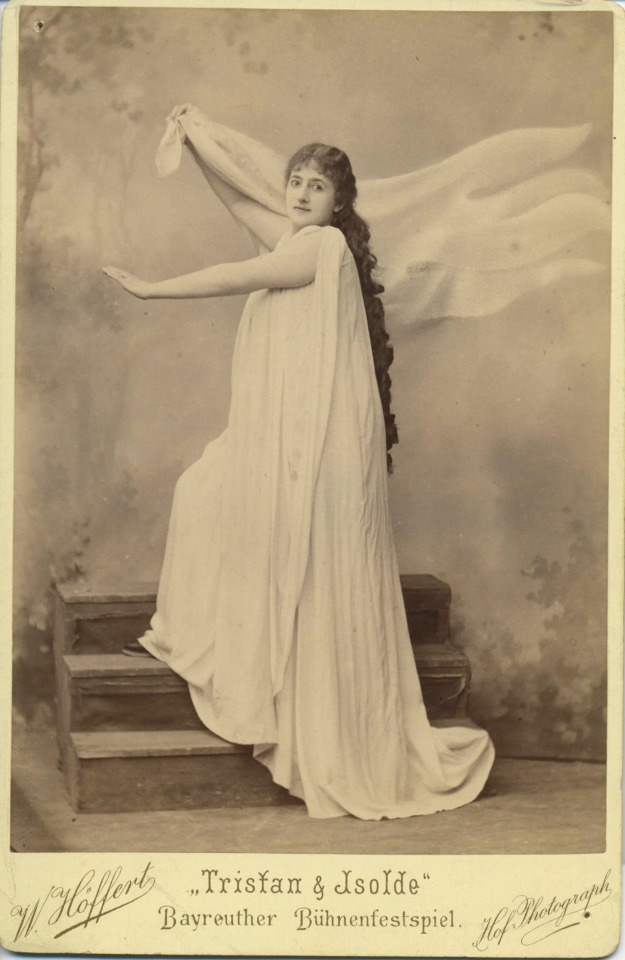

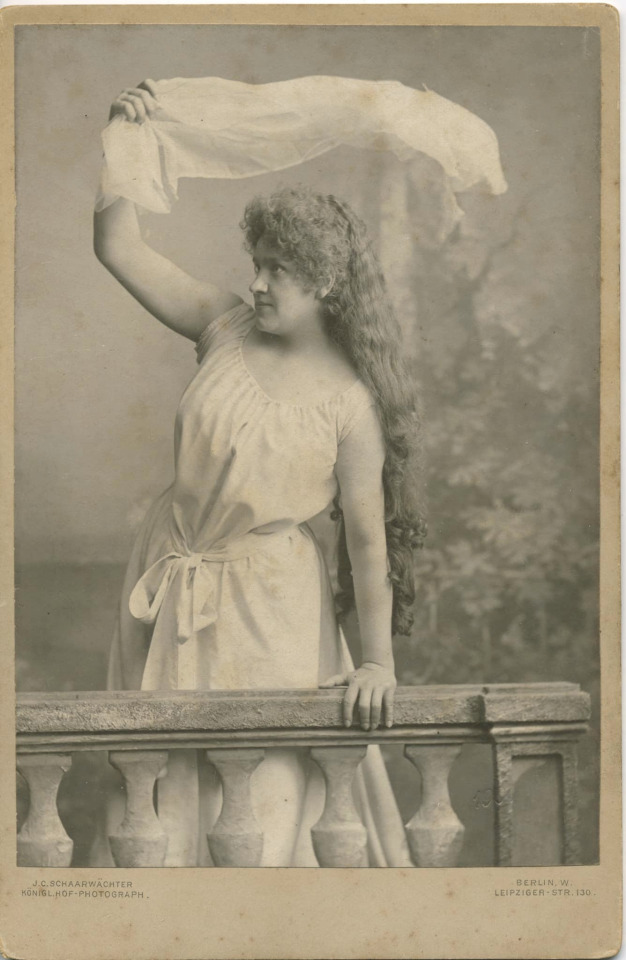
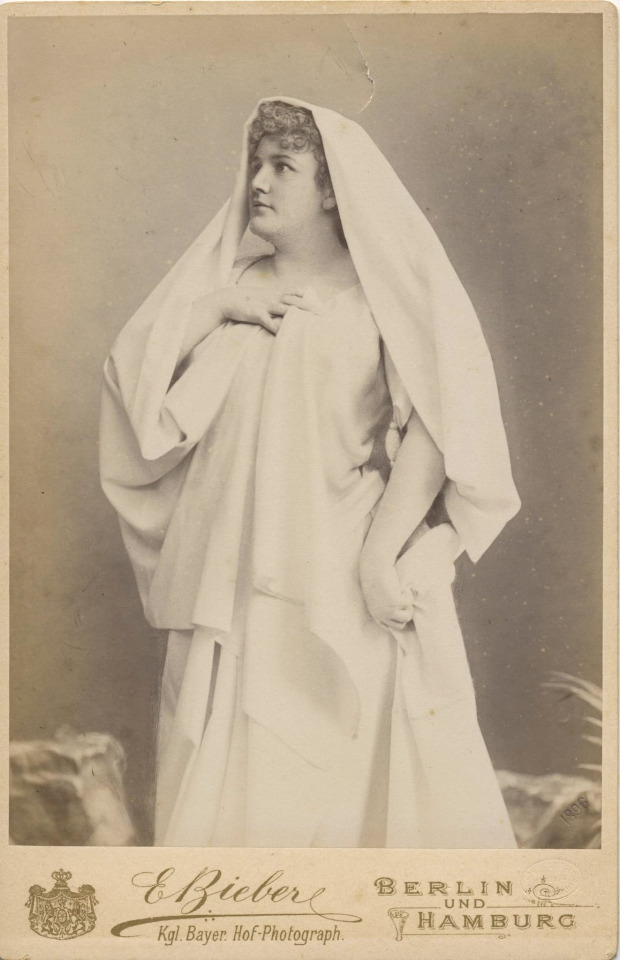
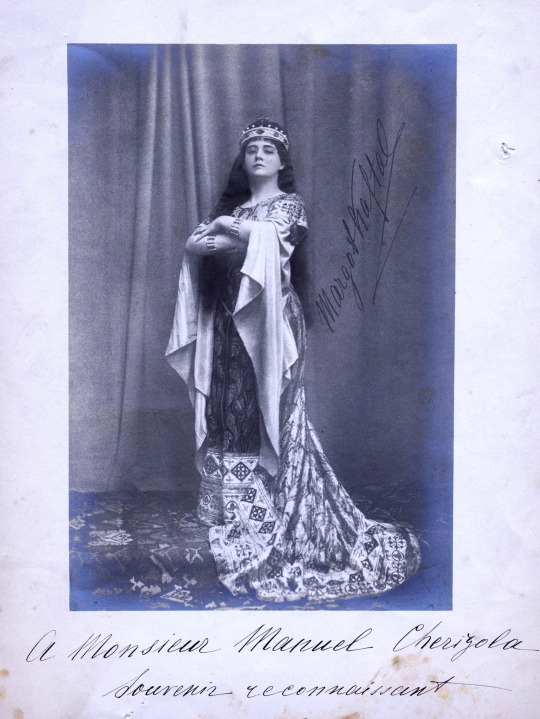
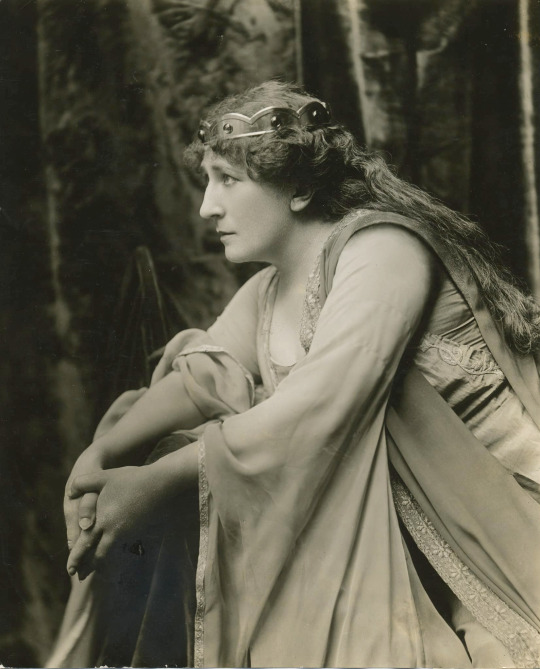
On June 10, 1865, the world premiere of "Tristan and Isolde" by R. Wagner took place in Munich.
„Mild und leise wie er lächelt…“
Here are some of the first sopranos to have sung the role of Isolde over the years and contributed to the success of this work through their dedication.
Malvina Schnoor von Carolsfeld, (7 December 1825 – 8 February 1904), Danish-born Portuguese dramatic soprano.
Felia Litvinne (11 October 1860, Saint Petersburg – 12 October 1936, Paris) was a Russian-born, French-based dramatic soprano.
Italia Vasquez-Molina (1869-1945), Italian soprano.
Irma von Voggenhuber (17 July 1841 Budapest - 11 January 1888 Berlin), soprano.
Elsa Westendorf (1877-1918), German soprano.
Marie Wittich 27 May 1868 – 4 August 1931), German dramatic soprano.
Rosa Sucher (23 February 1849 – 16 April 1927), German dramatic soprano.
Berta Pester-Prosky (Frankfurt am Main, September 7, 1866 - Krefeld, December 27, 1922), German soprano.
Thila Plaichinger (14 March 1868 – 19 March 1939), Austrian soprano.
Katharina Klafsky (19 September 1855 – 22 September 1896), Hungarian dramatic soprano.
Margot Kaftal (1873 Warsaw - October 1942 in Italy), Polish soprano.
Johanna Gadski (15 June 1870/1872 – 22 February 1932), German dramatic soprano.
#opera#classical music#music history#bel canto#composer#classical composer#aria#classical studies#Tristan and Isolde#classical musician#classical musicians#musician#musicians#classical history#historian of music#diva#prima donna#maestro#chest voice#Tristan und Isolde#Richard Wagner#Wagner#soprano#classical singer#classical singing#opera history#history#music
25 notes
·
View notes
Text

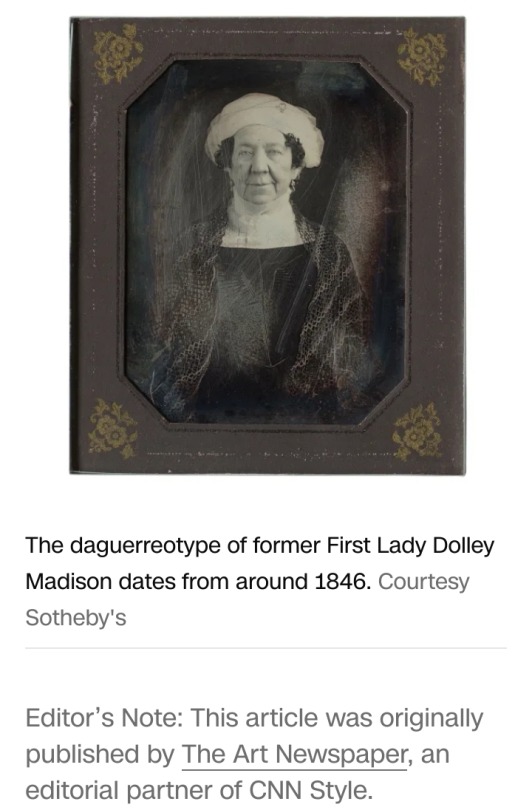







—
Dolley Todd Madison (née Payne; May 20, 1768 – July 12, 1849) was the wife of James Madison, the fourth president of the United States from 1809 to 1817.
She was noted for holding Washington social functions in which she invited members of both political parties, essentially spearheading the concept of bipartisan cooperation.
Previously, founders such as Thomas Jefferson would only meet with members of one party at a time, and politics could often be a violent affair resulting in physical altercations and even duels.
Madison helped to create the idea that members of each party could amicably socialize, network, and negotiate with each other without violence.
By innovating political institutions as the wife of James Madison, Dolley Madison did much to define the role of the President's spouse, known only much later by the title First Lady — a function she had sometimes performed earlier for the widowed Thomas Jefferson.
—
James Madison (March 16, 1751 – June 28, 1836) was an American statesman, diplomat, and Founding Father who served as the fourth president of the United States from 1809 to 1817.
Madison was popularly acclaimed the "Father of the Constitution" for his pivotal role in drafting and promoting the Constitution of the United States and the Bill of Rights.
#The Smithsonian#National Portrait Gallery#US First Lady Dolley Madison#US President James Madison#quarter-plate daguerrotype#daguerreotype#John Plumbe Jr#Sotheby's#Louis Daguerre#photographic process#photography#first lady#1800s#19th century
3 notes
·
View notes
Text

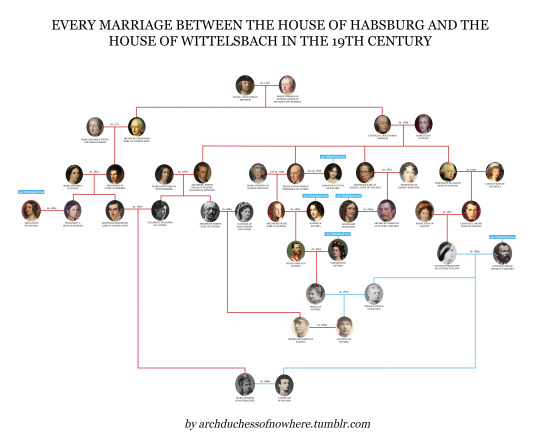
In the 19th century, there were 9 marriages between the House of Wittelsbach and the House of Habsburg:
1816, 29 October. Emperor Franz I of Austria (1768-1835) married Princess Caroline Augusta of Bavaria (1792-1873). They had no children.
1824, 4 November. Archduke Franz Karl of Austria (1802-1878) married Princess Sophie of Bavaria (1805-1872). They had five children, four who survived infancy.
1842, 30 March. Francesco V, Duke of Modena and Archduke of Austria (1819-1875) married Princess Adelgunde of Bavaria (1823-1914). They had one daughter who did not survive infancy.
1844, 16 April. Prince Luitpold of Bavaria, future Prince Regent, (1821-1912) married Archduchess Auguste Ferdinande of Austria-Tuscany (1825-1864). They had four children.
1844, 1 May. Archduke Albrecht of Austria, Duke of Teschen (1817-1895) married Princess Hildegard of Bavaria (1825-1864). They had three children, two who survived infancy.
1854, 24 April. Emperor Franz Josef I of Austria (1830-1916) married Duchess Elisabeth in Bavaria (1837-1898). They had four children, three who survived infancy.
1866, 20 February. Prince Ludwig of Bavaria, future King Ludwig III, (1845-1921) married Archduchess Maria Theresa of Austria-Este (1849-1919). They had thirteen children, eleven who survived infancy.
1873, 20 April. Prince Leopold of Bavaria (1846-1930) married Archduchess Gisela of Austria (1856-1932). They had four children.
1893, 15 November. Archduke Joseph August of Austria (1872-1962) married Princess Auguste of Bavaria (1877-1964). They had six children, four who survived infancy.
#zoom in for better quality!#this was so ridiculously hard to make that it actually took me A YEAR to put it together#because I did it and re-did it several times until it looked sort of decent#I still don't like much how it came out but well. it be like that sometimes#house of habsburg#house of wittelsbach#family tree
41 notes
·
View notes
Text
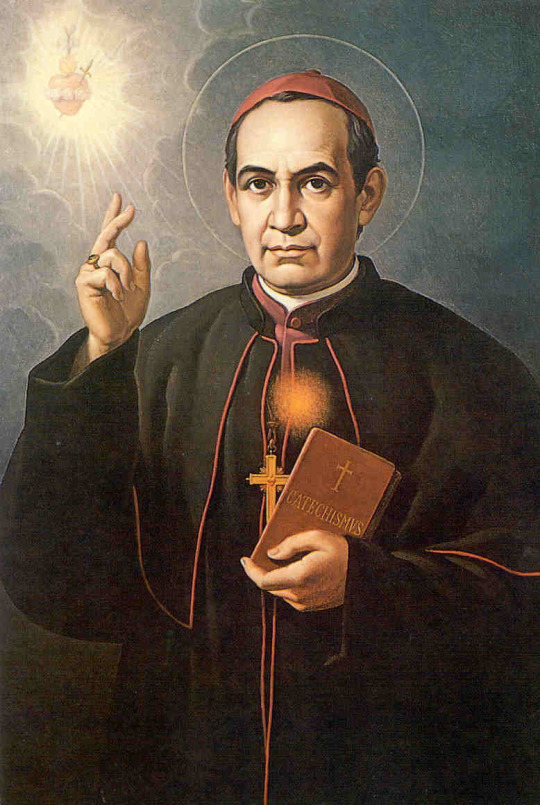
THE DESCRIPTION OF SAINT ANTHONY MARY CLARET Feast Day: October 24
"I will be kind to everybody, particularly to those whom I find troublesome."
The founder of the Congregation of Missionary Sons of the Immaculate Heart of the Blessed Virgin Mary, also known as the Claretians, was born Anthony Maria Claret i Clarà, in Sallent, Barcelona, Spain on December 23, 1807. He was the fifth of the eleventh children of Juan and Josefa Claret. His father was a woollen manufacturer. As a child he enjoyed pilgrimages to the nearby Shrine of Our Lady of Fussimanya.
He received an elementary education in his native village, and at the age of twelve became a weaver. At the age of 18, he went to Barcelona to specialize in his trade as a Jacquard loom programmer, and remained there until he was 20 years old. Meanwhile, he devoted his spare time to study and became proficient in Latin, French and engraving.
Frightened that his love of programming was causing him to become obsessed and burned out, and recognizing a call to religious life, he left Barcelona. He wished to become a Carthusian monk but finally entered the diocesan seminary at Vic in 1829, and was ordained on June 13, 1835, on the feast of St. Anthony of Padua. He received a benefice in his native parish, where he continued to study theology until 1839; but as missionary work strongly appealed to him, he proceeded to Rome. There he entered the Jesuit novitiate but had to leave due to ill health. He then returned to Spain and exercised his pastoral ministry in Viladrau and Girona, attracting notice through his efforts on behalf of the poor.
On July 16, 1849, the Feast of Our Lady of Mount Carmel, he founded the Congregation of Missionary Sons of the Immaculate Heart of the Blessed Virgin Mary, whose main apostolate was local and foreign missions, and founded the great religious library at Barcelona which was called 'Librería Religiosa' (now 'Librería Claret'). Pope Pius IX gave approval to the congregation on December 22, 1865.
The following year, he was appointed archbishop of Santiago de Cuba at the request of the Spanish crown via Pope Pius IX. He was consecrated at Vic in October 1850. Before he embarked, he made three separate pilgrimages: to Our Lady of the Pillar, patroness of Spain; to the Virgin of Montserrat, patroness of Catalonia; and to Our Lady of Fussimanya, near his home village. Finding the diocese in a miserable condition, he quickly initiated a spiritual reform. To continue his apostolate on a wider scale, he established on the island the Teaching Sisters of Mary Immaculate.
He was recalled to Spain in 1857, and made the chaplain of Queen Isabella II, who also made him her confessor. He also began the printing apostolate for the diffusion of the Good News. The Liberia Religiosa de Barcelona became a center of renewal and evangelization for the whole country.
In his final years, he went to Rome to prepare for the First Vatican Council. Owing to failing health he withdrew to Prada de Conflent in the French Pyrenees, where he was still harassed by his Spanish enemies; shortly afterwards he retired to the Cistercian abbey at Fontfroide, Narbonne, southern France, where he died on October 24, 1870 at the age of 62. In the course of his life, he is said to have preached 10,000 sermons and to have published 200 religious books.
Beatified on February 25, 1934 by Pope Pius XI and canonized a saint by Pope Pius XII on May 7, 1950, his major shrine can be found in Vic in Barcelona.
Anthony Mary Claret is the patron of textile merchants, weavers, the Claretians, and savings, in which he taught the poor the importance of savings.
2 notes
·
View notes
Photo








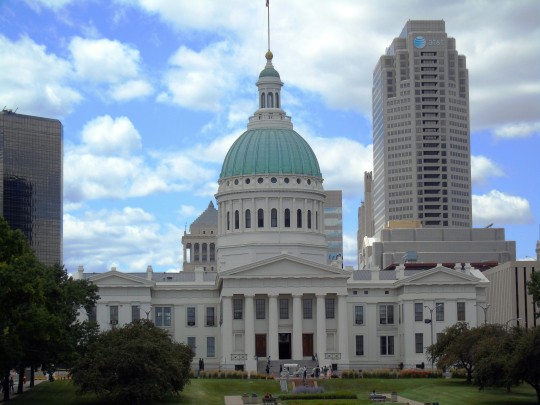

A large fire nearly burned St. Louis to the ground on May 16, 1849.
#large fire#16 May 1849#anniversary#US history#St. Louis#Missouri#USA#architecture#Missouri River#Gateway Arch#Anheuser-Busch Brewery#cityscape#Midwestern USA#original photography#summer 2014#travel#vacation#Old Courthouse#tourist attraction#landmark#St. Louis Fire of 1849#downtown#engineering
1 note
·
View note
Text





woe, characters be upon ye
massive thanks to @juiceofthebox44 for the most amazing commission art ever!! it was a wonderful experience. go check out its pinned post and throw money at her
image transcriptions below the cut!
Image 1:
Mary Anne “Annie” Ogden she/her Born May 7, 1842, Chattanooga, TN Died Sept 4, 1876 (34) Deadwood, SD Cause of death: Hanging Life occupation: Nurse Museum occupation: Sharpshooter mini Gender: Woman/Sexuality: Pansexual Kill count: 7 Good memory: Splitting her first bullseye out on the firing range with her father Bad memory: Skipping town in the dead of night to escape an arranged marriage Favorite food: Chicken soup Least favorite food: Raw carrots Curse of choice: Shit Annie Ogden is a cheerful woman with a disposition as fiery as her hair and a past as speckled as her freckled cheeks. She’s clever, self-assured, and stubborn as they come; rumor has it she once beat a trophy head in a staring contest. She firmly believes that a rule is only worth following as long as it helps somebody. Her experience with first aid has made her indispensable to the clumsier residents of the West, and years of experience has honed her instincts to a razor edge - if a bar fight breaks out, she’ll be the first to know, and you had better hope she’s on your side when she does. The speed and accuracy of her mind is only rivaled by her weapon: a Whitworth long range rifle, taken from the corpse of a Confederate sniper.
Image 2:
Jane Lee Leung she/her Born February 10, 1862, San Francisco, CA Died January 22, 1900 (37) Sacramento, CA Cause of death: Plague Life occupation: Laundress Museum occupation: Barkeep mini Gender: Butch/Sexuality: Lesbian Kill count: 0 Good memory: Listening to the railroad workers tell stories around the fire at night Bad memory: Narrowly surviving a building collapse in an earthquake Favorite food: Homemade potstickers Least favorite food: Shrimp Curse of choice: Fuck Jane Leung is an even-keeled butch who serves up dry cocktails and an even drier wit. Born to a Chinese rail worker father, she doesn't mind living in the Western diorama; the clamor and chaos reminds her of home. Besides, it takes a lot more than rowdy cowboys to scare her. Her take-no-shit attitude might make her seem aloof, but she's the most loyal friend you could ever hope for - she's always ready with a listening ear and solid advice. She spends her days slinging bottom-shelf liquor and keeping her finger on the pulse of the town gossip. There are some benefits to running the only saloon.
Image 3:
Born December 1, 1849, Nauvoo, IL Died August 6, 1878 (28) Utah Territory Cause of death: Sunstroke Life occupation: Cattle hand Museum occupation: Cowboy mini Gender: Nonbinary man/Sexuality: Bisexual Kill count: 0 Good memory: Watching the stars on a clear summer night, surrounded by fireflies Bad memory: Running away from home at 16 Favorite food: Pork and beans Least favorite food: Beef liver Curse of choice: Damn Luke Maitland is a laid-back redhead who loves kids, the outdoors, and adventures, though he really doesn’t get along with the sun. You can usually find him hanging around the bar, losing at cards and being terrible at darts. Though luck is hardly ever on his side, he never lets that stop him from trying, and he always keeps a sunny disposition even when things are at their darkest. He would hardly call himself an angel, though; he can hold his own against the Romans, and he definitely holds his fair share of grudges against them. He’s a gentle soul, though. He loves his partner, Micah, more than anything – except their kids, Maria and Max, of course.
Image 4:
Micah Rios Hernandez he/him Born July 8, 1857, San Antonio, TX Died October 12, 1886 (29) southern Texas Cause of death: Mine collapse Life occupation: Coal miner Museum occupation: Cowboy mini Gender: Nonbinary man/Sexuality: Gay Kill count: 0 Good memory: Learning to swim in the lake near his childhood home Bad memory: Nearly drowning in the lake near his childhood home Favorite food: Oranges Least favorite food: Eggs Curse of choice: Shit Micah Rios is a longsuffering Tejano man with two bad habits: smoking and falling in love far too easily. He’s borne witness to a lot of strange things in his life, so nothing really phases him anymore – not even living in a history museum a century and a quarter in the future. He’s often serious and quiet, though he’ll always volunteer to help if someone needs it. He just prefers to stay in the background. When it comes to fighting the Romans, though, it’s good to remember that it’s always the quiet ones you have to look out for. When he isn’t kicking Roman ass, he prefers to spend his time hanging out in Leung’s Bar with Luke, his partner, and their kids, Max and Maria.
Image 5:
The Twins aka The Seedlings aka Maria Jane Ogden Rios Maitland she/her and Maximiliano Isaiah Ogden Rios Maitland he/him Maria and Max Rios Maitland are twins who are joined at the hip in every way but literal. Maria is bouncy, outspoken, and passionate about her friends, while her brother is softer, shyer, and highly opinionated about what’s right and wrong. Like all siblings, they have their ups and downs, but they always resolve it in the end; the fact that they share a bed probably helps. When they aren’t in school or out playing with their friends, they can be found drawing on any available surface. They’re proof that a family doesn’t have to be conventional - sometimes, a family is a little boy, a little girl, their two gay dads, and the lesbians whose bar they all live on top of.
#feel free to ask me literally anything you want about these guys#i'm so obsessed with them#in a normal healthy way#natm fandom#riv's ocs#annie#jane#luke#micah#maria#max#the pomegranates#the ogdens#the seedlings
5 notes
·
View notes
Text

SAMEDI 16 NOVEMBRE 2024 (Billet 1 / 6)
Nous attendions mercredi, jour de sortie des nouveaux films, avec impatience mais, malheureusement, rien de très intéressant à se mettre « sous les yeux » !
« Gladiator II » est massacré par la « bonne » critique. JM avait adoré la musique du premier « Gladiator », composée par Hans Zimmer, c’est la seule chose dont il se souvient…
« En tongs au pied de l’Himalaya » semble, malgré le sujet, être traité d’une façon un peu trop convenue. Aimant bien Audrey Lamy, nous le verrons peut-être plus tard, mais à la télé…
« The Substance » est un film d’horreur, mis en en scène par une réalisatrice française, avec Demi Moore. Beaucoup de 5 Etoiles données par les Critiques « Pro » sur « Allo Ciné ». Vu le thème, JM ira éventuellement, mais tout seul…
« Here – Les plus belles années de notre vie », malgré une bonne moyenne, il y a un peu trop de mauvaises critiques « Pro » et « Spectateurs » sur « Allo Ciné »…
« Le Royaume », filmé par un metteur en scène corse, tourné en Corse, avec des comédiens (amateurs) corses. Pour ces 3 raisons, il nous aurait bien plu mais beaucoup trop de critiques sur les acteurs non-professionnels qui jouent parait-il plus que mal ! Alors que les interprètes de « L’Histoire de Souleymane », à part une actrice à la fin, sont tous des amateurs et sont tous EXCELLENTS !...
« La Vallée des fous », mouais… Le thème est original, l’acteur principal, dans certains rôles peut se révéler paradoxalement très bon. On attend quelques retours de nos proches avant peut-être de se décider…
« Finalement », oh que non, même si nous savons que tous les comédiens adorent Claude Lelouch ! Nous préfèrerions déjeuner un jour avec lui. A Deauville bien sûr !…
« Louise Violet », beaucoup trop « scolaire » !...
« Au boulot », SURTOUT PAS !!! Le metteur en scène, même en photo, nous ferait sortir plein de boutons de partout ! Nous sommes complètement allergiques à ce genre d’individu. Nous n’avons même pas envie d’écrire son nom !...
Il ne nous reste plus qu’à espérer une meilleure pèche mercredi prochain.
___________________________
En attendant, jeudi dernier, nous avons eu envie de sortir et de nous balader, malgré un temps plus que grisouille mais sans pluie.
Et pourquoi pas au Jardin du Luxembourg ? Marina, ayant passé toute son enfance et une bonne partie de son adolescence dans le VIe, adore ce quartier. Comme nous voulions aussi un peu de « culturel », nous avons choisi de visiter un (tout) petit Musée que nous ne connaissions pas du tout, le « MUSÉE EUGÈNE DELACROIX », Place de Furstemberg, surtout intéressant parce que ce fut la dernière résidence du peintre et qu’il y avait son Atelier.
Il ne faut pas espérer y trouver des tableaux majeurs, ce sont plutôt des esquisses de ses tableaux et des œuvres de peintres amis qui y sont exposées.
Le petit jardin est adorable et c’est toujours émouvant de découvrir des lieux où des hommes célèbres ont séjourné.
Lisez ci-dessous des extraits de textes publiés sur le Site du Musée, puis vous trouverez quelques photos pour vous donner peut-être envie d’y aller à votre tour. Nous vous conseillerons le printemps pour les arbres de la Place Furstemberg, même amputée récemment de son célèbre paulownia quasi centenaire (gros scandale dans le quartier !), et la végétation du petit jardin attenant à l’Atelier.
____________________________
Le peintre s’est installé rue de Furstemberg le 28 décembre 1857, abandonnant son atelier de la rue Notre-Dame-de-Lorette, trop éloigné de l’église Saint-Sulpice dont il avait été chargé, dès 1849, de décorer une chapelle (nous vous la montrerons dans le 3ème Billet – NDLR du Blog).
Fatigué, l’artiste souhaitait être au plus proche de son œuvre, mais il n’était plus en mesure de faire chaque jour un long trajet. Aussi fut-il heureux de trouver un logement calme et aéré, tout près de Saint-Sulpice.
Une fois installé, Delacroix exprimera souvent dans son Journal et dans ses lettres son contentement :
« Mon logement est décidément charmant (...). Réveillé le lendemain en voyant le soleil le plus gracieux sur les maisons qui sont en face de ma fenêtre. La vue de mon petit jardin et l’aspect riant de mon atelier me causent toujours un sentiment de plaisir. » (Journal, 28 décembre 1857)
Lorsque Delacroix décida de quitter son grand atelier de la rue Notre-Dame-de-Lorette, au sein du quartier dit de la Nouvelle-Athènes, alors si à la mode, le choix de la rue de Furstemberg fut en grande partie conforté par l’existence du petit jardin dont il pouvait avoir la jouissance exclusive avec la possibilité d’y construire un atelier. Au cœur d’un quartier animé, il pouvait ainsi évoluer dans un îlot de verdure et de tranquillité. Dans ce jardin, d’environ 400 m², invisible depuis la rue, le peintre fit donc construire son atelier.
La place de Furstemberg où Delacroix choisit de s’installer est l’une des plus charmantes de Paris. La placette est plantée de quatre grands arbres qui, au printemps, lui confèrent un aspect particulièrement romantique qu’accentue l’éclairage nocturne d’un lampadaire à cinq globes.
Eugène Delacroix vécut dans cet appartement jusqu’à sa mort.
___________________________
Adresse : 6 rue de Furstemberg, 75006 Paris
Ouverture du musée : du mercredi au lundi, de 9h30 à 17h30, et tous les premiers jeudis du mois jusqu’à 20h30, sauf le 1er août.
Prix du Billet : 9€
Information importante : le musée Delacroix sera fermé du 20 au 29 novembre 2024 inclus, en raison d’un changement d’accrochage.
Métro : Mabillon

















0 notes
Text
Old Vienna
Anno 1902

Wien 3, Rennweg
Haltestelle der Verbindungsbahn.

Anno 2007
Während der ersten Hälfte des 19. Jahrhunderts befand sich an der Stelle der heutigen Haltestelle Rennweg die so genannte Weberschleuse des Wiener Neustädter Kanals knapp vor der Brücke, die im Verlauf des Rennwegs den Kanal überquerte. Nachdem 1849 der Wiener Kanalhafen in den Bereich des späteren Aspangbahnhofs verlegt worden war, erfolgte nach und nach die Umgestaltung des stillgelegten Kanalbetts zum Bahnkörper.
Erste Haltestelle
Die erste Station Rennweg wurde 1883 im Zuge der Verbindungsbahn errichtet und wurde bis 1943 von Personenzügen befahren. Von 1898 bis 1918 gehörte sie ferner zum äußeren Netz der Wiener Stadtbahn. Im Zweiten Weltkrieg wurde die Verbindungsbahn schwer in Mitleidenschaft gezogen und die Haltestelle musste 1945 abgetragen werden.
Zweite Haltestelle
Im Zuge der Einführung der Schnellbahn in Wien wurde beschlossen, eine neue Haltestelle Rennweg zu errichten, welche am 23. Mai 1971 eröffnet werden konnte. Als Folge daraus wurde der Aspangbahnhof 1977 abgetragen. Die neue Haltestelle Rennweg bestand aus einem Seiten- und einem Mittelbahnsteig. Letzterer wurde jedoch niemals als solcher benutzt, da ein drittes Gleis nie verlegt wurde.
Dritte Haltestelle
Zwischen 2000 und 2002 wurde die Flughafenschnellbahn ab der Abzweigung von der S-Bahn-Stammstrecke bis zum Flughafen Wien-Schwechat zweigleisig ausgebaut, um einen 15‑Minuten-Takt zwischen dem Stadtzentrum und dem Flughafen zu ermöglichen. Dieser wurde später in Form des City Airport Trains geschaffen, welcher allerdings nicht am Rennweg hält.
Zugleich wurde auch der Bahnhof Rennweg komplett umgebaut. Anstelle der bisherigen Seitenbahnsteige wurden ein Mittelbahnsteig und barrierefreie Zugänge errichtet. Auch wurde ein unterirdisches Überwerfungsbauwerk zum Einfädeln der vom Flughafen kommenden Züge auf die Stammstrecke installiert und über den Bahnsteigen ein Einkaufs-, Gastronomie- und Bürozentrum angelegt. Die Station Rennweg war bedingt durch die Bauarbeiten zwischen 2001 und 2002 für 16 Monate aufgelassen und war nach der Wiedereröffnung eine der ersten Wiener S-Bahn-Stationen im neuen Design. Sie verfügt über einen Mittelbahnsteig mit zwei je 160 m langen Bahnsteigkanten.
Im Zuge von Bauarbeiten entlang der gesamten Stammstrecke sollen von 2025 bis 2027 die Bahnsteige auf 220 Meter verlängert werden. Die Zugänge werden baulich angepasst, die Rampe zur Rechten Bahngasse wird durch einen Aufzug ersetzt.
Foto 1902 Blamauer, Adolf Albin, 1847-1923
0 notes
Text
17 août : la fête nationale du Gabon
Le Gabon célèbre une indépendance, acquise le 17 août 1960, à l’égard de la France. Mais, à l’époque, il n’avait pas vraiment souhaité. Léon Mba, le leader local, avait réclamé la départementalisation de son pays, comme la Guadeloupe ou la Guyane. L'indépendance lui sera finalement imposée par Paris. Le président De Gaulle ayant mis son véto à la demande gabonaise.
Léon Mba est élu président de la république en 1961 (il était le seul candidat). Trois ans plus tard, il sera déposé lors d'un coup d'État puis ramené au pouvoir par une intervention militaire française. À sa mort, Albert-Bernard Bongo (qui deviendra Omar Bongo Ondimba, après sa conversion à l’islam) instaure, en 1967, une dictature soutenue par la France, qu’il lèguera à son fils, Ali Bongo. Il laissera en héritage une fortune considérable, fruit de quatre décennies de pillage de son pays. Ali Bongo a régné jusqu’en 2023, année où il a été renversé par une révolution de palais. Le pays est aujourd’hui dirigé par le Général Brice Clotaire Oligui Nguema, qui se présente comme le « président de la transition »… Le Gabon, ce meilleur élève de la Françafrique, n’a jamais connu la démocratie.
Le Gabon n’était pas une colonie comme les autres, il est devenu français dès 1839 après la signature d'un traité entre la France et un souverain de l'estuaire du Gabon, Antchuwè Kowè Rapontchombo, dit le « roi Denis ». Sa capitale, Libreville a été fondée en 1849 pour accueillir des esclaves libérés comme de Freetown en Sierra Leone. En 1886, le Gabon devient officiellement une colonie française et, malgré la résistance de quelques chefs guerriers fangs, mitsogos ou punus, avant d’être intégré à l’Afrique Equatoriale française (AEF) en 1910. Lors de sa première visite en France en tant que président, Léon Mba déclarait : « Le Gabon est indépendant, mais entre le Gabon et la France rien n’est changé, tout continue comme avant. »Ce pays qui célèbre son indépendance aujourd’hui a-t-il jamais été vraiment indépendant ? Même si aujourd’hui, le pays se détache de la France pour s’offrir à la Chine qui ne fera qu’une bouchée de ce pays de deux millions d’habitants richement doté en matières premières.
Pour ce 64e anniversaire de l’indépendance au Gabon, le président lance les festivités en allant déposer une gerbe au Mausolée Léon Mba, avant la parade militaire proprement dite de ce mardi 17 aout, à partir de 10h., sur sur le grand boulevard du bord de mer. Les journée du 15, 16 et 17 ont été déclarées fériées.
Un article de l'Almanach international des éditions BiblioMonde
0 notes